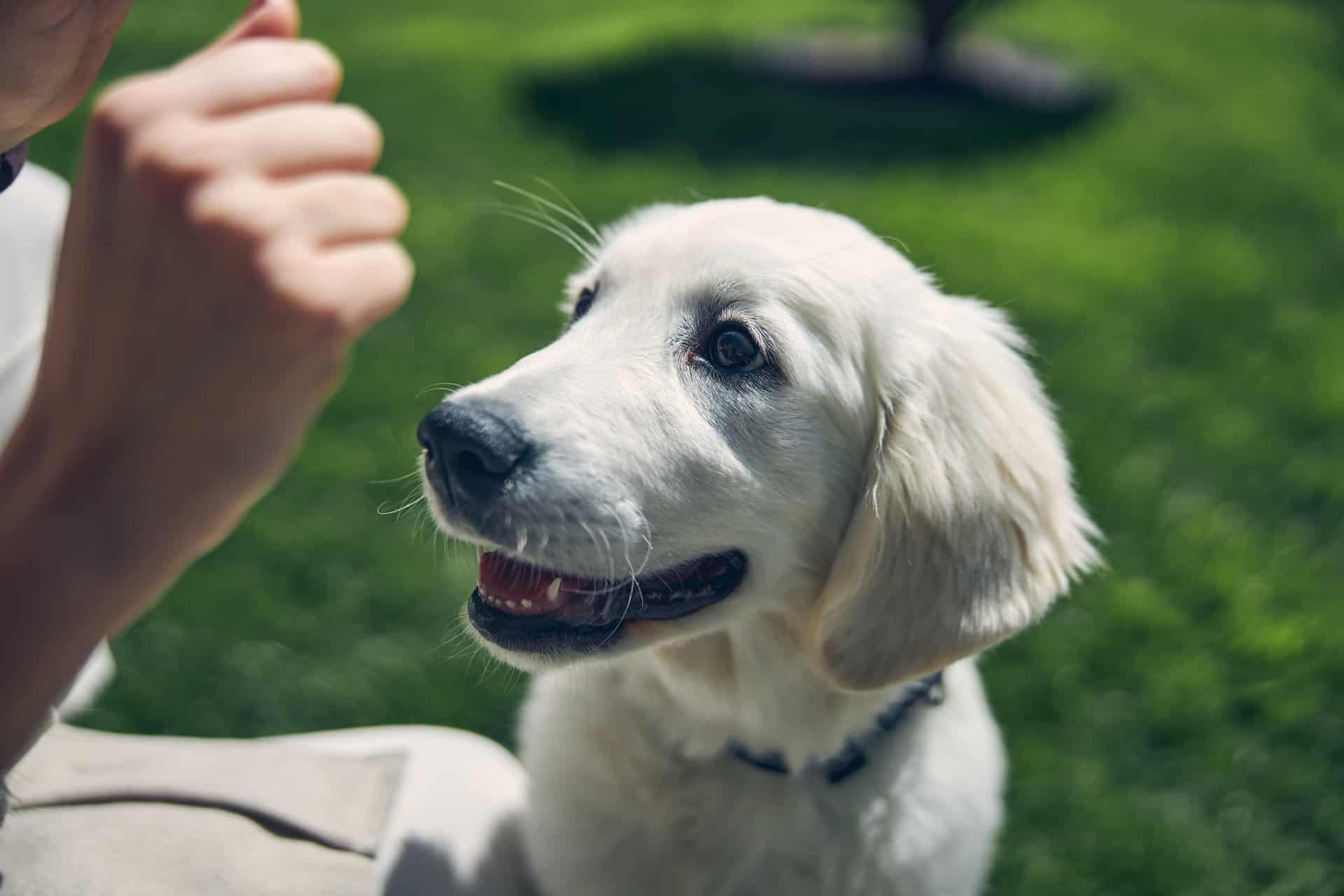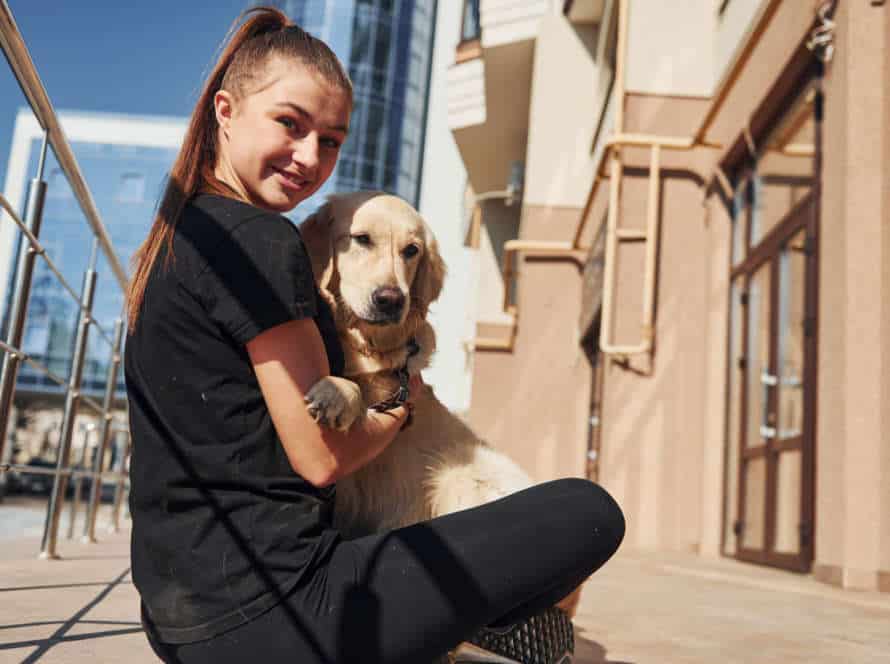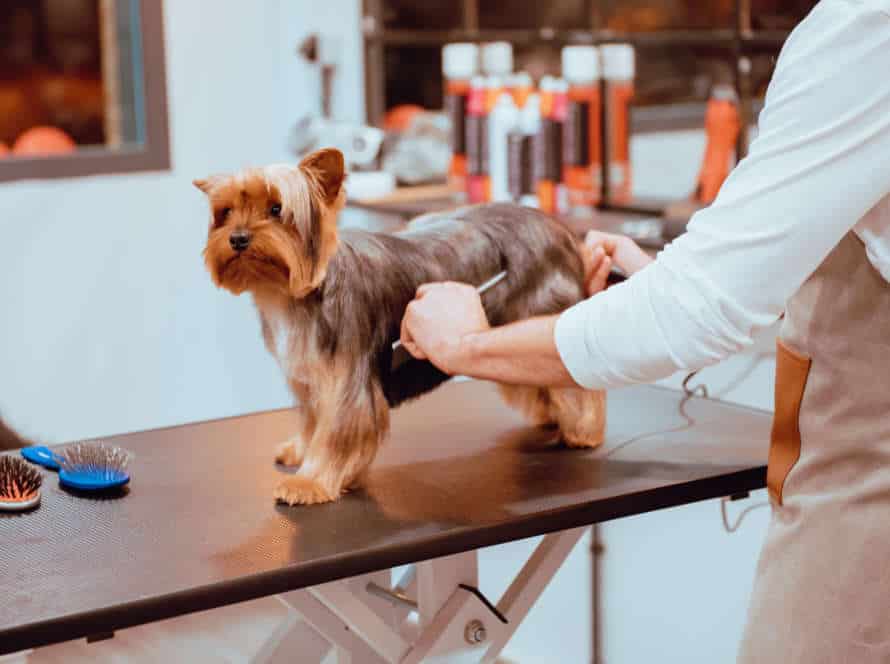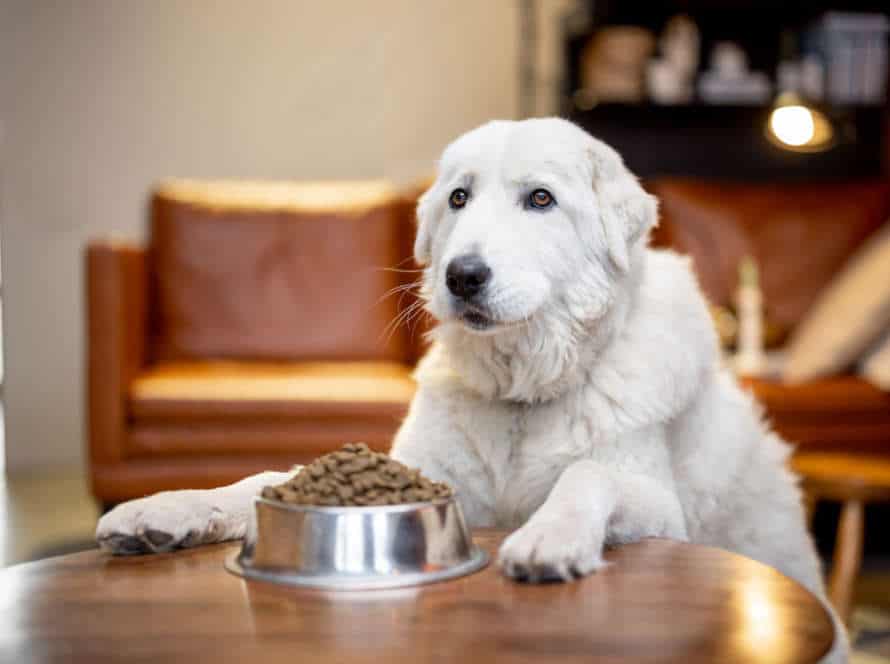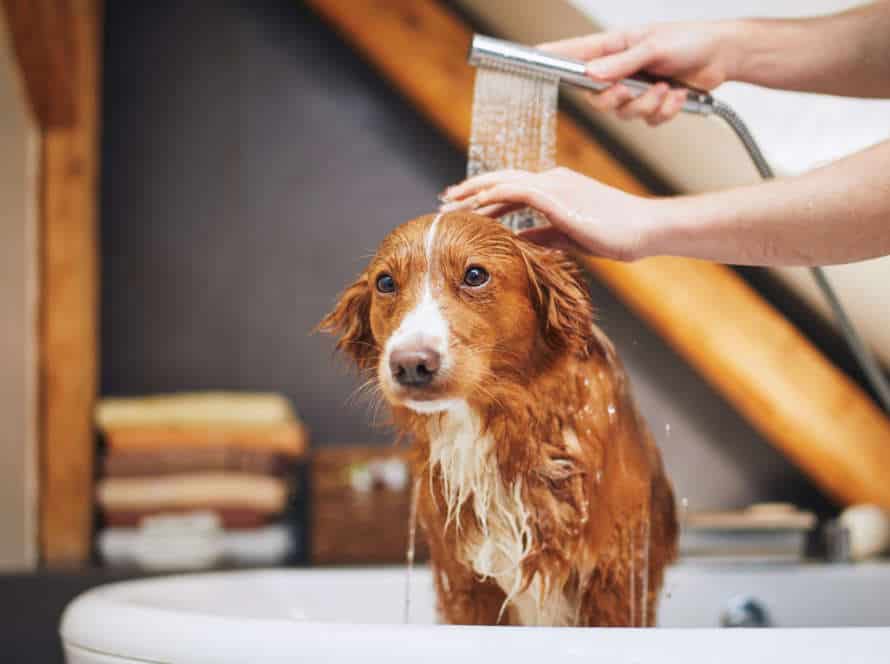Transform Your Dog’s Behavior with These Positive Reinforcement Techniques
Positive reinforcement is a great way to train your dog without fear or punishment. Here are 3 techniques:
- Clicker training: Use a clicker to mark desirable behavior. Give a reward or treat afterwards. This reinforces the behavior.
- Treat-based training: Give treats or rewards for good behavior. Reward only the behavior you want. Pair it with a positive verbal cue like “good job!”.
- Verbal praise and affection: Dogs love attention. Give verbal praise and physical affection as rewards. Use an encouraging tone of voice. Reward with pets or belly rubs when the right behavior is shown.
Remember, positive reinforcement takes time, patience and consistency. But in the end, it can help transform your dog’s behavior in a positive way.
Understanding Dog Behavior
Understand your pup! It is key to transform their behavior. Dogs are smart animals and they love positive reinforcement. To make sure they don’t behave badly, let’s look into the psychology of dogs. Here, we will discuss the basics of canine psychology and positive reinforcement techniques.
Importance of Learning Dog Behavior
Gaining insight into your pup’s behavior is key for using positive reinforcement to modify their behavior. Here’s why it’s essential to learn about dog behavior:
- Successful Training: By understanding your dog’s behavior, you can customize your training to fit their specific needs. Positive reinforcement is very effective in motivating good behavior, and knowledge of your pup’s behavior can help you figure out which rewards to use and how to use them to the greatest effect.
- Improved Communication: Identifying your dog’s body language, vocalizations, and other forms of behavior can help you understand what they are trying to communicate. This strengthens the bond between you and your pet and prevents negative behaviors by addressing their needs.
- Preventing Problems: Understanding canine behavior allows you to intervene before any issues arise. Many pet parents are unaware of the signs of anxiety, aggression, or fear which can lead to more severe issues if not addressed early on. Knowing your pup’s behavior can help you stop dangerous or destructive behaviors from happening.
By learning about dog behavior, you can create a happy, healthy, and well-behaved dog with positive reinforcement techniques.
Dog Body Language and Communication
Understanding a dog’s body language and communication is a must-know for transforming their behavior with positive reinforcement. Here are some key signals to remember:
- Tail: A wagging tail isn’t always a happy sign. A high, fast tail wag usually means happiness. Low, slow tail wags signal caution. Tucked tails mean fear or submission.
- Ears: Relaxed dogs have ears in their natural position. Erect ears mean attentiveness or alertness. Flattened ears indicate fear or submission.
- Eyes: Direct eye contact can be a threat to some dogs. Half-moon eyes, which show the whites of the eyes, show stress or anxiety.
- Body posture: Relaxed dogs have a loose and wiggly body. Stiffness or tension signals stress or aggression.
By understanding your dog’s body language and communicating correctly, you can reinforce their good behavior and strengthen the bond with your furry friend.
Pro tip: Always reward your pup with treats and praise when they show good behavior. This will encourage them to continue being good.
Reinforcing Positive Behaviors
Reinforcing positive behaviors in dogs is essential to train them properly and change their behavior. Positive reinforcement techniques are based on rewarding wanted behaviors to encourage them to act again and reinforce the behavior. Here are some useful positive reinforcement techniques to help transform your dog’s behavior:
- Treat-based training: Give tiny treats as rewards for desirable behaviors, such as sitting or obeying commands.
- Praise-based training: Dogs love recognition. Verbally praise them with a “good boy” or “good girl” in a peaceful, encouraging tone.
- Clicker training: This technique uses a clicker to tell your dog they have done something good and will get a treat, praise or play.
- Play-based training: Playtime is an attractive incentive for most dogs. Reward wanted behaviors with a game of fetch or tug-of-war.
Consistency is vital. Positive reinforcement techniques can help promote good behavior and change your dog’s behavior over time.
Positive Reinforcement Techniques
Positive reinforcement is an awesome tool to alter and form your dog’s conduct. It’s an influential way to coach and energize your pet. It’s predicated on the theory that giving treats for a desired behavior will raise the chance of that behavior happening again soon.
This article will explain how positive reinforcement can be used while training your pooch, and the diverse kinds of reinforcement.
Reward-Based Training Methods
Reward-based training, also known as positive reinforcement, is an efficient and humane way to change your pup’s behavior. No fear or intimidation needed! This is proven to reduce aggression and other issues in pooches. It rewards good behavior, instead. Here are some techniques you can use:
- Treats, praise and toys for good behavior.
- Ignore bad behavior, direct your dog towards good behavior.
- Clickers or verbal cues to signal good behavior before rewards.
- Be consistent, focus on one behavior at a time.
By using reward-based training, you’ll improve your pup’s behavior, and strengthen your bond with them.
A Pro Tip: Keep training sessions short and exciting, so your dog will stay engaged and motivated.
Clicker Training
Clicker training is a positive reinforcement method to change your dog’s behavior. You use a clicker to signal that your dog did something good and give a reward afterwards.
To get started, follow these steps:
- Get a clicker and high-value treats.
- Introduce your dog to the clicker and treat them when the clicker is pressed.
- Use the clicker for desired behaviors such as sitting, lying down, or coming when called.
- After every click, give a treat to reinforce the behavior.
- Repeat this process, increasing difficulty and time of the behaviors.
Clicker training is science-based and force-free which can improve your dog’s behavior and relationship with you. Tip: Start with simple behaviors and move to the more complicated ones to avoid overwhelming your dog.
Treat Training
Treat training is an amazing way to improve your pup’s behavior and strengthen your bond.
To get started:
- Pick a treat that your dog loves!
- When they do the desired behavior (e.g. sit or stay), reward them with the treat and kind words.
- Do this on a regular basis, so they connect the behavior with the treat.
- Eventually, replace the treats with verbal praise or physical affection.
Tip: be patient and consistent, and never use punishment for corrections. Positive reinforcement works best for long-term behavior change.
Basic Training Commands
Positive reinforcement is a great way to form and modify your pup’s behavior. This strategy allows your pup to comprehend the commands that you want them to know and happily obey them. We’ll look into the regular training orders and how to incorporate positive reinforcement while instructing them.
Teaching Sit, Stay and Lie Down
Teaching your pup the three basics: sit, stay, and lie down? Essential for shifting their behavior for the better – without using force or punishment.
For ‘sit’: Hold a treat near their nose, then raise it up. Their head will follow – and their bottom will lower into a sit! Right away, say ‘Yes‘ and give them the treat.
For ‘stay’: Begin with a sit. Hold out your hand and say ‘Stay‘ in a firm but gentle voice. Step back and return to them, and reward them with a treat if they stay.
For ‘lie down’: Start with a sit. Hold a treat close to the floor and get their attention. Move it along the floor, and they’ll lower into a down position. Say ‘Yes‘ and give them the treat.
By using these commands and positive reinforcement, you’ll teach your dog good behavior while strengthening your bond.
Recall Training
Recall training is vital for teaching your pup basic commands. Here’s how to do it with positive reinforcement:
- Find a quiet place with no distractions, use a clicker or say ‘come’.
- Reward with a treat and praise when they come.
- As they get better, increase the distance and make it harder. Introduce distractions too.
- Practice a lot and don’t use negative reinforcement.
- Eventually, they’ll associate coming to you with good stuff.
Pro Tip: Consistency is key, so practice often and be patient!
Leash Training
Leash training is a must for basic dog training. It helps change your pup’s behavior with positive reinforcement. Teaching your pup to walk on a leash without pulling can be tough. Here are five tips to help you get started:
- Introduce the leash to your dog and let them sniff it.
- Attach the leash to their collar and let them drag it around the house, with you watching.
- Start walking the pup on a leash in an area with no distractions.
- Give treats for following commands and walking properly on the leash.
- Consistently practice and increase the difficulty level as you go.
Pro Tip: Use treats your dog loves as rewards! This will make the learning process more enjoyable.
Solving Common Behavioral Problems
Every pup is different – they can have behaviors like jumping, barking, digging, or even aggression towards other animals and humans.
Positive reinforcement is a great way to teach your pup to be better behaved. It’s been used to successfully make changes to many types of behavior. This training technique can help your pup with your help! Let’s get into how it works and how it can help your furry friend.
Barking
Barking is a common problem with dogs. But, don’t worry! There are positive reinforcement techniques to help. Here are a few:
- Identify why the dog is barking. Is it fear? Boredom? Separation anxiety? Hunger?
- Use positive reinforcement. Give treats or toys when the dog is quiet. This teaches them good behavior equals good things.
- Ignore the barking. When your pet realizes their barking has no effect on you, they’ll stop.
- Give verbal cues. Train them to associate words like “shush” or “quiet” with being quiet.
- Consistency is key. With patience, practice, and positive reinforcement, your dog can learn to stop excessive barking.
Jumping
Jumping is a common problem in dogs. Positive reinforcement is the way to go. Here’s what you can do:
- Ignore ’em when they jump. Turn away and avoid eye contact until they settle down.
- Reward alternate behavior. Like sitting or staying. Give treats and praise when they do.
- Use positive reinforcement consistently. Reward good behavior and ignore bad.
- Teach the “off” command. Train your pup to listen and reward when they do.
By using these techniques, you can teach your dog to be polite and friendly. Pro Tip: Be patient and consistent with your training to ensure success!
Digging
Digging is a common issue with furry friends. To control it, use positive reinforcement techniques! Here’s how:
- Provide an outdoor space for digging – Allot a certain area for your pup to dig. Hide toys and treats there to incentivize their actions.
- Give your dog exercise – Take them for walks and get them to move around. This will help stop boredom and reduce the urge to dig.
- Positive reinforcement – Reward good behaviour and ignore digging incidents. Praise and treat them when they use the outdoor space.
Keep in mind that every pup is different! With patience and consistency, these techniques can help change their digging habits.
Training for Aggression
Aggression can be tough to manage when it comes to training your pup. There are several methods you can try, but positive reinforcement is a great choice. Here, we’ll look at the advantages of positive reinforcement and how it can help modify your dog’s behavior and reduce aggression.
Understanding Aggression in Dogs
Aggression in dogs can be corrected with positive reinforcement techniques. Reasons for aggression in dogs could be fear, frustration, territoriality, or pain. To correct aggressive behavior in dogs, one can use counter-conditioning, desensitization, and obedience training.
Remember to consult a professional trainer before attempting any of these techniques. Patience and consistency are essential for success.
Tips to Deal with Aggressive Behavior
Dealing with aggressive doggy behavior can be hard! But using the right training techniques, you can turn it around for the better. Here are some tips:
- Find out what triggers your pup’s aggression.
- Start training ASAP to stop it from getting worse.
- Clicker train, praise, and give treats to reward good behaviour.
- Stay vigilant and have patience – training takes time.
- Ask for help from a professional or vet if you’re having trouble managing your pup’s aggression.
Pro Tip: Aggression can be a sign of an illness, so always discuss it with your vet to make sure your pup is healthy.
Training for Aggressive Dogs.
Dealing with aggressive behavior in dogs can be tricky. However, with the help of positive reinforcement techniques, it is possible to change their behavior. Here are some tips:
- Positive Reinforcement Training: Reward good behavior with treats, praise, and love to reinforce good behavior and deter aggressive behavior.
- Desensitization: Put your pup in a controlled environment and show them the thing that triggers their aggression until it no longer makes them react aggressively. Increase the intensity or duration of exposure gradually.
- Counterconditioning: Show your canine that the trigger of their aggression can be linked to a positive experience. For example, if they are aggressive towards other dogs, slowly introduce them to friendly pooches while giving them treats and praise to create positive associations.
- Consult a Professional: If you need extra help and advice, consider consulting with a professional dog trainer or behaviorist.
With patience, consistency, and the correct training methods, it’s possible to train aggressive dogs and change their behavior.
Frequently Asked Questions
1. How do positive reinforcement techniques work for dog behavior modification?
Positive reinforcement relies on rewarding desirable behavior and ignoring or redirecting undesirable behavior. Dogs learn through trial and error, so by reinforcing the positive behaviors, they are more likely to repeat them in the future.
2. What are some examples of positive reinforcement techniques for dogs?
Examples include praise, treats, toys, and playtime. For example, if your dog sits on command, you can reward them with a treat or praise. It’s important to use rewards that are significant to your dog and consistent with their personality and preferences.
3. Can positive reinforcement be used for all types of dog behavior issues?
Positive reinforcement is effective for teaching basic commands and shaping good behavior. However, for more complex issues like aggression or separation anxiety, it may be necessary to seek professional help and use a combination of techniques.
4. Can positive reinforcement backfire and reinforce bad behavior?
If you’re not consistent with your rewards or inadvertently reward undesirable behavior, it can reinforce bad habits. It’s important to be clear in your commands and use rewards that are appropriate to the situation.
5. How long does it take to see results from positive reinforcement techniques?
Results can vary depending on the dog and the behavior you are trying to modify. Some dogs may respond quickly, while others may take longer. Consistency and patience are key to seeing results.
6. Are there any downsides to using positive reinforcement techniques?
The only downside is that it requires time and effort on your part to consistently use these techniques. However, it’s a kind and humane approach to dog training that strengthens your bond with your dog and leads to a happier, well-behaved pet.

